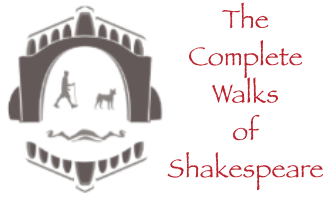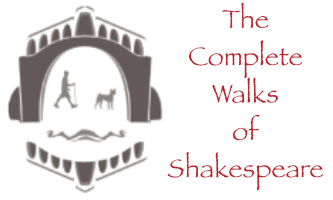Henry IV pt 2
Act 3 Sc2
Gloucestershire. Before Shallow’s House
Charlecote Park, Warwickshire
Background - “What is past is prologue”
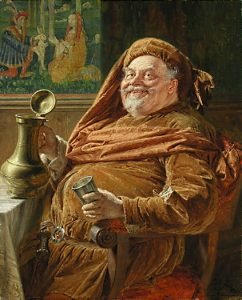
Sir John Falstaff at work..
HENRY IV PT 2
Henry IV part 2 opens two years after the Battle of Shrewsbury, which features at the end of Henry IV part 1, and which was fought on July 21st 1403.
Archbishop Scrope of York’s (pronounced Scroop’s) rebellion against the King has begun. It took place between May and June 1405.
It condenses far more history than part 1, ten years as opposed to three, with the historical scenes interspersed with those featuring the antics of the ever popular Falstaff.
The play ends with Henry V’s coronation, which was on April 9th 1413.
It’s thought to have been written between late 1597 and early 1598 and tells the story of further rebellion against Henry IV which leads to the execution of the Archbishop of York and the terminal decline of the King’s mental and physical health.
On the Stage - “The play’s the thing…”
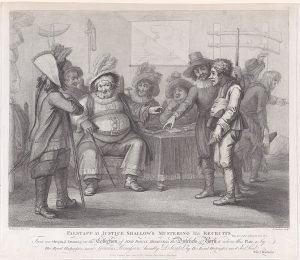 3:2 GLOUCESTERSHIRE BEFORE SHALLOW’S HOUSE
3:2 GLOUCESTERSHIRE BEFORE SHALLOW’S HOUSE
Falstaff is reunited with his old acquaintances Justices Shallow and Silence.
He selects recruits from among the local villagers, some of whom bribe their way out of military service.
Left alone Falstaff muses on the differences between Shallow’s tales of a wild youth and the man he actually remembers. He decides to return after the campaign and relieve him of some of his money.
On the Map - “Presume not that I am the thing I was”
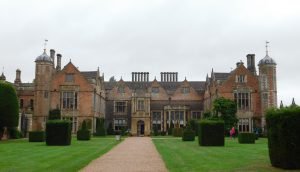
Charlecote Park
CHARLECOTE PARK, WARWICKSHIRE, ENGLAND
Of course, this is an entirely fictitious scene. However…
It’s been suggested that the character of Justice Shallow is a satire on Sir Thomas Lucy, a significant figure in the world of Shakespeare in his Stratford days. And a man he might want to caricature in his writings. Shallow also appears in The Merry Wives of Windsor.
The Lucy family home at Charlecote was originally built in 1558 although it’s been considerably altered since then.
It’s surrounded by a deer park and the story goes that Shakespeare was hauled up in front of the local magistrates after being caught poaching deer in the park.
That story dates back to 1688 and Richard Davies, the Anglican Archdeacon and early biographer of Shakespeare. Who wrote that Shakespeare was “much given to all unluckiness in stealing venison and rabbits particularly from Sir – – – – – Lucy who oft had him whipped and sometimes imprisoned and at last made him fly his native country to his great advancement….his revenge is so great that he [Lucy] is his Justice Clodpate (Shallow), and calls him a great man and that in allusion to his name bore three louses rampant for his Arms”.
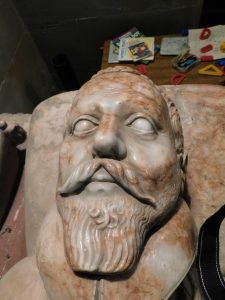
Tomb of Sir Thomas Lucy
The louses, or luces, are fish, the pike on the Lucy coat of arms which are alluded to in The Merry Wives of Windsor, where the character of Shallow also appears.
But then for the joke to ‘work’, theatregoers of the time would have to have some knowledge of Sir Thomas Lucy or the Lucy family, and of any antipathy Shakespeare had towards him or them.
And it has been persuasively argued that there was no deer park at Charlecote in Shakespeare’s day. So my happy reflection whilst visiting that the deer you can see in the park today might be descended from the one Shakespeare allegedly poached comes to naught.
You can visit Sir Thomas Lucy’s tomb in the nearby St Leonard’s Church and see the face Shakespeare would have known.

Possible descendants of the actual deer, in the grounds of Charlecote Park, that Shakespeare might have poached.
